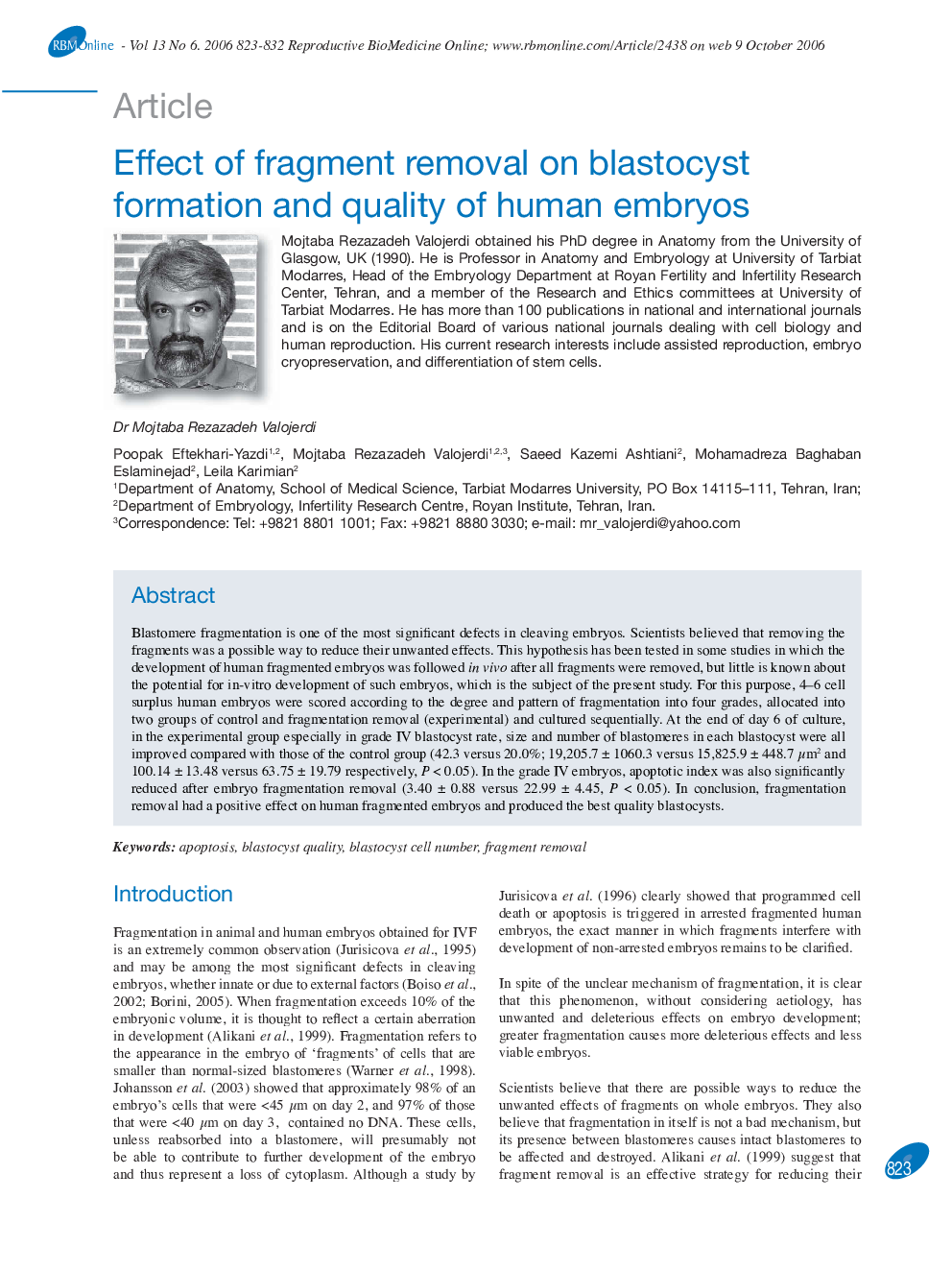| Article ID | Journal | Published Year | Pages | File Type |
|---|---|---|---|---|
| 3973397 | Reproductive BioMedicine Online | 2006 | 10 Pages |
Blastomere fragmentation is one of the most significant defects in cleaving embryos. Scientists believed that removing the fragments was a possible way to reduce their unwanted effects. This hypothesis has been tested in some studies in which the development of human fragmented embryos was followed in vivo after all fragments were removed, but little is known about the potential for in-vitro development of such embryos, which is the subject of the present study. For this purpose, 4–6 cell surplus human embryos were scored according to the degree and pattern of fragmentation into four grades, allocated into two groups of control and fragmentation removal (experimental) and cultured sequentially. At the end of day 6 of culture, in the experimental group especially in grade IV blastocyst rate, size and number of blastomeres in each blastocyst were all improved compared with those of the control group (42.3 versus 20.0%; 19,205.7 ± 1060.3 versus 15,825.9 ± 448.7 μm2 and 100.14 ± 13.48 versus 63.75 ± 19.79 respectively, P < 0.05). In the grade IV embryos, apoptotic index was also significantly reduced after embryo fragmentation removal (3.40 ± 0.88 versus 22.99 ± 4.45, P < 0.05). In conclusion, fragmentation removal had a positive effect on human fragmented embryos and produced the best quality blastocysts.
